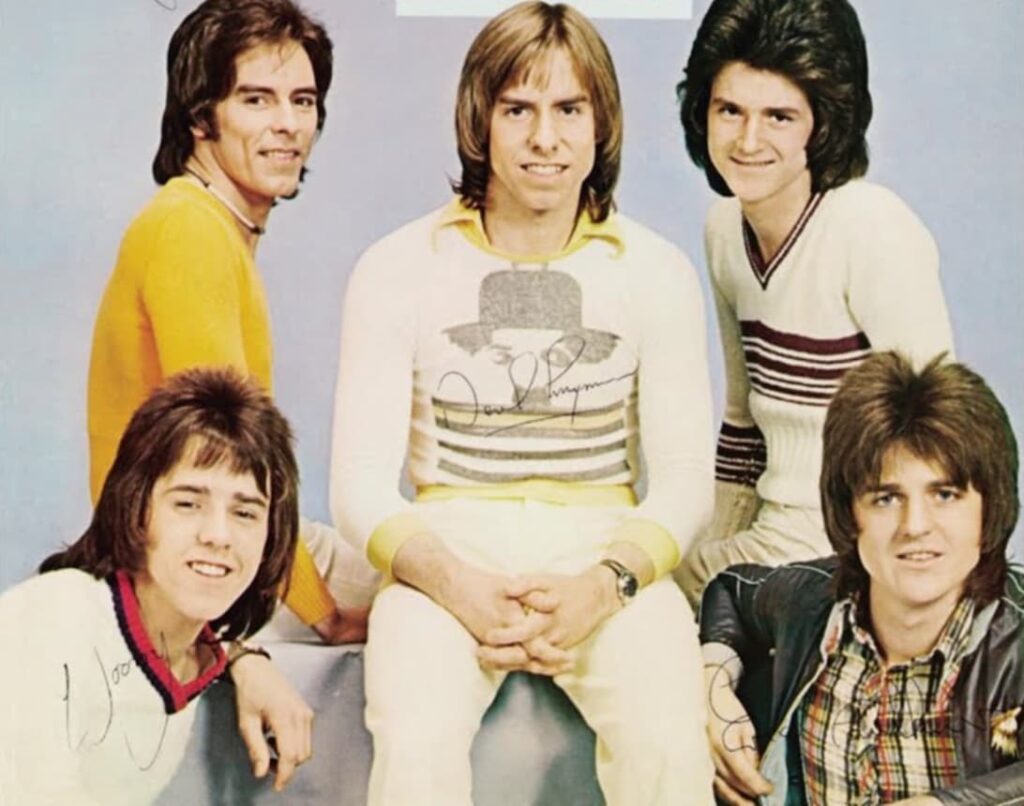
Oh, Those Carefree Days of Tartan and Teen Dreams: Revisiting the Infectious Joy of “Shang-A-Lang”
Ah, “Shang-A-Lang”, a vibrant burst of pure, unadulterated pop energy that swept across the airwaves and embedded itself firmly in the hearts of a generation. Released in the spring of 1974, this infectious anthem perfectly captured the zeitgeist of youthful exuberance and the simple pleasures of a carefree existence. It wasn’t just a song; it was a feeling, a soundtrack to the burgeoning hopes and dreams of teenagers everywhere.
Upon its release, “Shang-A-Lang” quickly ascended the charts, peaking at an impressive number two on the UK Singles Chart. This chart success was a testament to the song’s undeniable appeal and the burgeoning popularity of the band behind it: the sensational Bay City Rollers. For a time, the “Rollermania” phenomenon was a force to be reckoned with, and “Shang-A-Lang” served as one of its most potent and enduring expressions. It painted a picture of youthful camaraderie, of singing and dancing with friends, a sentiment that resonated deeply with their predominantly young fanbase.
The story behind “Shang-A-Lang” is as straightforward and joyful as the song itself. Written by the prolific songwriting duo of Bill Martin and Phil Coulter, the masterminds behind many of the era’s biggest hits, the song was crafted with the specific intention of being an upbeat, catchy singalong. Martin and Coulter had a knack for tapping into the popular mood, and with the Bay City Rollers already gaining momentum, they delivered a tune perfectly tailored to the band’s energetic image and the desires of their adoring fans. There wasn’t a deep, complex narrative woven into its creation; rather, it was about capturing a feeling, an atmosphere of unbridled fun.
The meaning of “Shang-A-Lang”, if one can even dissect such a purely joyful piece, lies in its celebration of simple pleasures and youthful companionship. The lyrics, with their repetitive and catchy phrases, evoke images of friends gathering, singing along, and generally enjoying each other’s company. The nonsensical title itself adds to the lighthearted and almost whimsical feel of the song. It’s a sound, an exclamation of joy, rather than a word with a specific definition. This ambiguity allowed listeners to project their own happy experiences onto the music, making it all the more personal and relatable. Think back to those times – perhaps a school dance, a gathering in someone’s living room, or just walking down the street with your friends, humming a tune. “Shang-A-Lang” provided the perfect soundtrack to those moments of uninhibited joy.
The impact of “Shang-A-Lang” extended beyond its chart success. It became an anthem for a generation, a song instantly recognizable and forever associated with the tartan-clad phenomenon that was the Bay City Rollers. Their energetic performances on television, often featuring synchronized jumps and infectious smiles, further cemented the song’s place in popular culture. It was a time of vibrant colours, bold fashion, and a sense of optimism, and “Shang-A-Lang” encapsulated that spirit perfectly. Even today, listening to that opening guitar riff can transport you back to a time of youthful innocence and uncomplicated happiness. It serves as a nostalgic reminder of a bygone era, a time when pop music was often simply about creating a feeling of pure, unadulterated joy. The song remains a beloved classic, a testament to the power of a simple, well-crafted pop tune to capture the hearts of millions and evoke fond memories decades later. It’s a sonic snapshot of a moment in time, forever etched in the collective memory of those who lived through the Rollermania era.